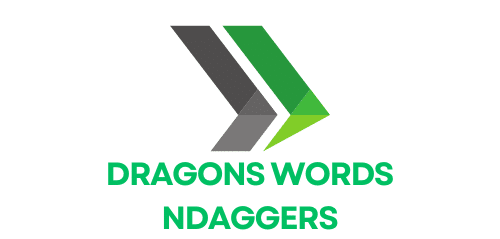How Are 3D Printing Technologies Benefiting Custom Dental Device Manufacturing?

In the intricate world of dental medicine, precision is everything. A perfect blend of art and science, dentistry has always been on the lookout for ways to improve its accuracy and efficiency. With the advent of innovative 3D printing technologies, the field has found a promising ally. As you delve into this article, you will discover how 3D printing is revolutionizing the custom manufacturing of dental devices, promising superior patient experience and outcomes.
The Advent of 3D Printing in Dental Technology
3D printing, or additive manufacturing, refers to a process that creates physical objects from a digital model by adding materials layer by layer. This technology has been making waves in various industries, and dentistry is no exception. The integration of 3D printing technology into dental practice brings about a new dimension of precision, customization, and speed.
A lire également : Can Augmented Reality Assist in Complex Industrial Machine Repairs?
3D printing is rapidly becoming a digital mainstay in dental laboratories and clinics. It’s an exciting time for dental professionals and patients alike. This technology opens up new possibilities for the design and manufacturing of dental devices, from crowns and bridges to orthodontics and implants.
Enhanced Precision and Customization
3D printing technology’s primary advantage lies in its ability to produce highly accurate and custom devices. It uses a digital model as a guide, allowing for an impeccable fit and highly personalized dental solutions. Each patient’s oral anatomy is unique, and this technology can capture even the minutest details, leading to more comfortable and effective dental appliances and prosthetics.
A lire en complément : How Can Social Media Platforms Use AI to Counter Misinformation?
In traditional dental manufacturing, the process of creating dental molds can be uncomfortable for the patient. In contrast, 3D printing uses digital imaging technologies, such as intraoral scanners, to gather precise patient data without any discomfort.
Moreover, the 3D printed models can be tested and adjusted before making the final product, ensuring a perfect fit. This level of accuracy and customization is particularly beneficial for complex surgical guides and implants, where precision is paramount.
Time and Cost Efficiency
3D printing technologies are renowned for their ability to speed up the manufacturing process. Compared to traditional methods, 3D printing can produce dental appliances and models in a fraction of the time. This speed can be a game-changer in emergency situations or when quick turnarounds are necessary.
In addition, 3D printing can be more cost-effective in the long run. Although the initial investment in equipment and software might be substantial, the reduction in labor and materials over time can offset these costs. Moreover, dental clinics and labs can print multiple components simultaneously, increasing productivity and reducing waste.
Variety of Printing Materials
The range of materials suitable for 3D printing has expanded over the years. Today, diverse materials, from resin and ceramics to metals and biocompatible polymers, can be used to print dental devices. This variety allows dental professionals to select the most suitable material based on the specific requirements of each case.
These materials are durable, lightweight, and capable of mimicking the look and feel of natural teeth. For instance, 3D printed ceramics can be used to create aesthetically pleasing and highly durable crowns and bridges. On the other hand, biocompatible polymers are ideal for surgical guides and orthodontic aligners.
Scholarly Backing and Future Applications
The benefits of 3D printing in dentistry are not mere speculation. They’re backed by numerous studies and scholarly articles documented on platforms like Google Scholar. These pieces of research highlight the significant advantages and potential of these technologies in dental device manufacturing.
As for future applications, 3D printing is set to continue its trajectory of innovation. We can expect further advancements in materials and techniques, and potentially even the ability to print living tissues for dental regeneration. The possibilities are seemingly endless, and these advances will continue to push the boundaries of what’s achievable in dental medicine.
In conclusion, 3D printing technologies are proving to be a boon to the dental industry.
Advances in dental implants using 3D printing technology
Among the benefits of 3D printing in dental technology, the production of dental implants stands out. These prosthetics, designed to replace missing teeth, require a high level of precision to ensure a perfect fit and function. With traditional manufacturing methods, creating these implants can be a time-consuming and complex process. However, 3D printing technology is set to change this.
By leveraging computer-aided design (CAD) and computer-aided manufacturing (CAM), dental professionals can create detailed digital models of the patient’s mouth. These models serve as the blueprint for the 3D printer, which adds materials layer by layer to create the implant. The result is a bespoke dental implant designed to match the patient’s oral structure precisely.
This level of customization not only ensures a comfortable fit but also improves the mechanical properties of the implant. Custom-made implants distribute the biting forces more evenly across the jaw, reducing the risk of implant failure.
Moreover, the use of biocompatible materials in 3D printing, such as titanium and polymers, reduces the risk of the body rejecting the implant. Selective laser sintering, a popular technique in additive manufacturing, can create 3D printed dental implants that mimic the texture and hardness of natural teeth, enhancing patient comfort and satisfaction.
The Future of 3D Printing in the Dental Industry
The world of three-dimensional dental printing is one that is constantly evolving. With the continuous advancement of technology, the dental industry can expect even more benefits and applications from 3D printing.
One potential future application of 3D printing in dentistry is the production of living tissues. Scientists are exploring the possibility of using 3D bioprinters to print living cells, which could potentially be used to regenerate damaged tooth tissues. While this application is still in its experimental stage, it offers exciting possibilities for the future of dental medicine.
Moreover, the adoption of 3D printing technologies in dental education is promising. Dental schools can use 3D printed models to enhance the learning experience of students, offering a hands-on approach to understanding complex dental structures and procedures.
As pointed out by numerous studies available on Google Scholar, Crossref, and PubMed, the benefits and potential of 3D printing technologies in dental device manufacturing are vast. While the initial investment might be significant, the long-term gains in accuracy, speed, and cost-efficiency are undeniable.
Conclusion
The impact of 3D printing on the dental industry is manifold. From creating precise, custom dental implants to the potential regeneration of damaged tissues, this technology is revolutionizing dental practices. It offers not just an improved patient experience but also a marked improvement in the quality of dental care provided.
While the adoption of 3D printing technologies in dentistry is still in its progressive stage, the future holds immense potential. As we continue to harness the power of this technology, we can expect to see even more exciting advancements in the realm of digital dentistry.
With the support of scholarly backing and promising future applications, it’s evident that the integration of 3D printing in dentistry will continue to grow. As such, it’s clear that 3D printing technologies are proving to be a game-changer in the dental industry, propelling it into a new era of precision, efficiency, and innovation.
